“What does it cost to advertise on facebook?”
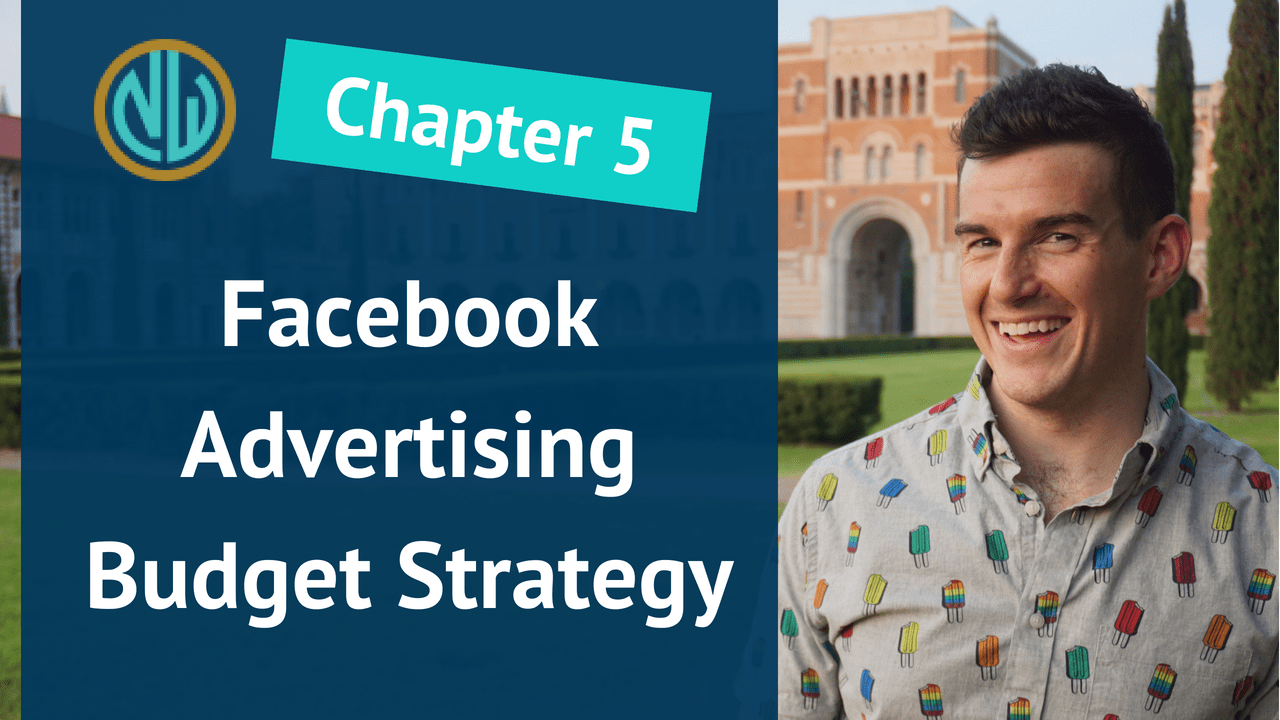
It’s the biggest question I get asked: “What’s the cost to advertise on Facebook? And how do I get charged?”
You know ads are everywhere – but the amount of budget you actually need to be effective may surprise you.
Is it $10? $1,000? Something in between?
You’re curious about Facebook ads for your yoga business. But you’re concerned that
- You’ll blow hundreds of dollars and see no return on investment,
- You’ll come off as slimy, sleazy, and inauthentic, or
- You’ll attract the wrong kinds of people.
That said, you really REALLY want to
- Reach more clients,
- Announce and maximize upcoming promotions and sales, and
- Have a marketing machine humming in the background and helping your business.
If that applies to you, and you want the skinny on the right costs to advertise on Facebook for yoga businesses, read on.
(This post is Chapter 5 of Yoga Advertising On Facebook: The Ultimate Guide. See a full table of contents here, and to get a PDF copy of the entire guide, click the button below.)
Setting your budget
First, let’s debunk some myths.
Ads on Facebook can start at $1/day. The more you spend, the more people see your ad (or see it more frequently).
Also, to be clear – you’re not charged by the click. People get confused because they see a metric called “cost per click” in their ads manager, which looks like this.
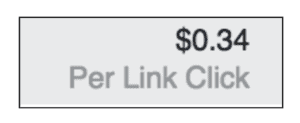
This is different than other advertising platforms like Google Ads, where you pay only when someone clicks. Here, you are not paying $0.34 per click – the average cost-per-click of your campaign is $0.34. So by all means, drum up more clicks!
If you budget $20 for an ad, you’ll spend $20, regardless of whether two people clicked or 2,000 people clicked. Your goal is to be compelling with the content of the ad itself and rack up as many views or clicks as you possibly can.
My suggestion for yoga studios: If you’re serious about using Facebook ads to attract more members and clients, plan to play with a minimum of $250/month.
This won’t be every month – in some months, you’ll go harder (For annual sales and New Year’s Resolution crowd, for example, you’ll want to spend more aggressively, while in summer months you can cool your jets).
Also, not all of that budget will go to reaching new people. In fact, a good chunk of your budget initially should be spent invigorating your current clients/community and encouraging increased attendance and referral opportunities.
“Daily budget” versus “Lifetime budget”
In the Facebook Ads manager, there are two ways to split up your budget.
The first is daily budget. In daily budgets, you set a start and end time for your ad, and the same amount is spent each day.
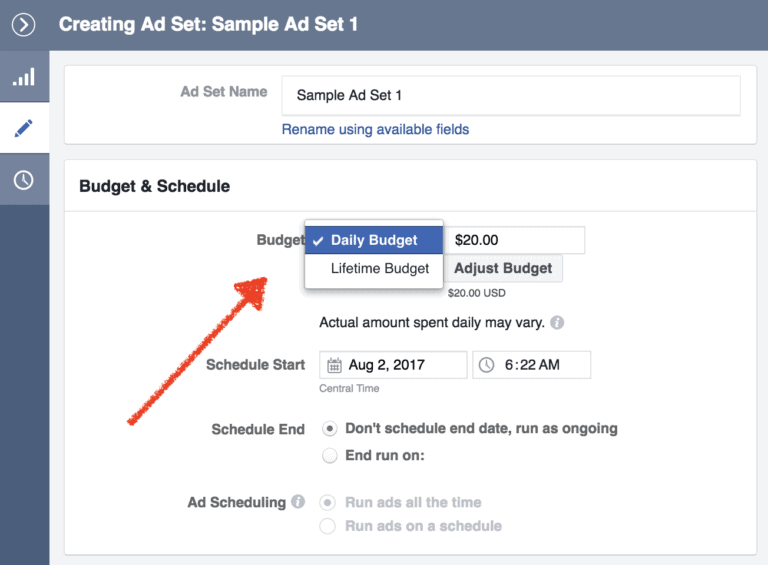
Daily budgets are great for ads that you want to have running in the background all the time to bring new people into your business. You can set whatever start date and end date you like.
In most campaigns, I recommend a daily budget. I also recommend you spend a smaller budget and test multiple audiences first; then, once you have more information about which audiences respond most to your ads, you stop the expensive ads and keep your best-performing ones.
You also have the option to do a lifetime budget. The advantage to doing a lifetime budget is that you can also specify the time of day and which days you would like your ad to show.
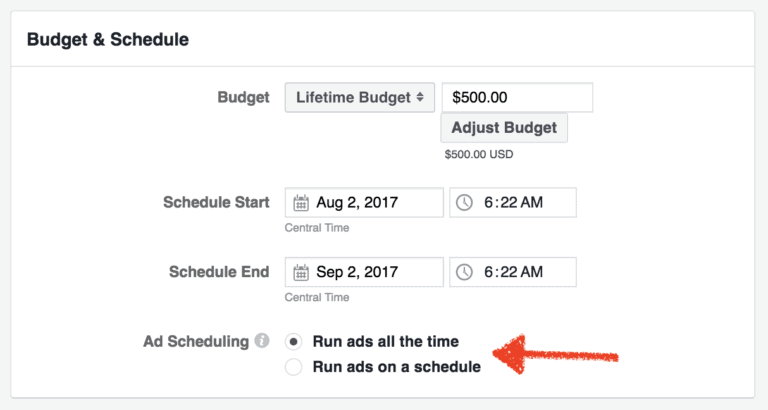
For example, I could specify that I only want my ad to run from 8am-5pm on weekdays. That would look like this:
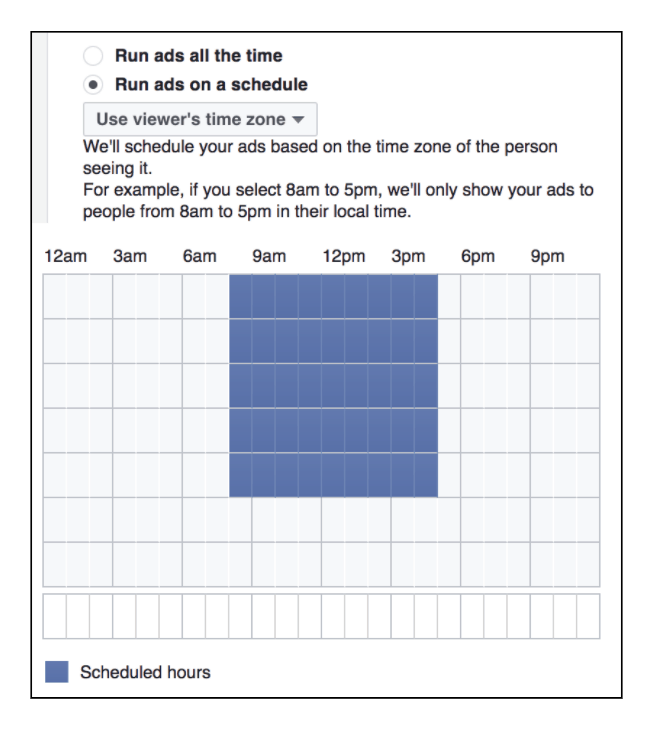
If you wanted to remind people at the start of the week to get signed up and reserve their spot in classes, you could have an ad that only runs on Sundays and connects to your website or your app. That would look like this:
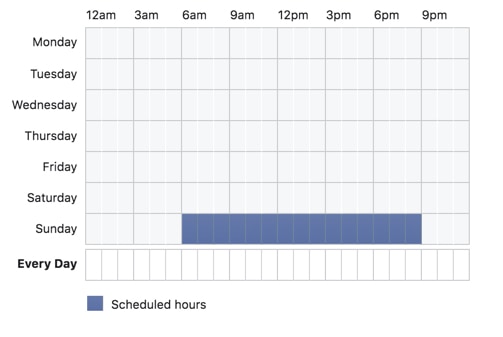
Or if Wednesday nights are your weekly “Yoga with Live DJ” classes at 6pm, you could have an ad that runs for the 24 hours prior to that class, bolstering attendance.
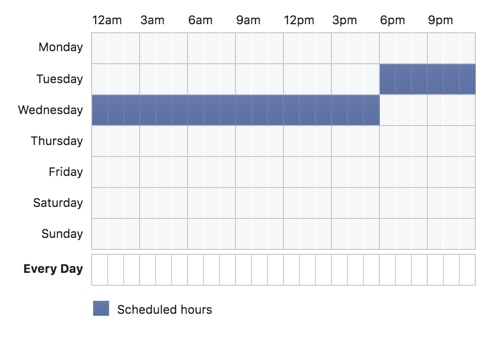
These ads would recur every week and be very inexpensive. You would also be stacking all of your likes, comments, and shares onto the same post, building more social proof over time.
How long to run your Facebook ads before tweaking them
This is where many small businesses make a big mistake.
You need to let your ads run for about 72 hours to let Facebook settle in and optimize your audience. Facebook is learning and tracking all the time who in your audience resonated with your ad and who didn’t.
I suggest you do this with a lower budget to start – $2-$5/day – and once Facebook has optimized your audience, you can add more budget and scale up from there.
“How will I know my audience has settled in?”
Under the “Status” column, your Active ads will have a note that the initial learning phase is complete. That looks like this:
![]()
“How can I set a monthly budget so my cost to advertise on Facebook doesn’t explode?”
If you’re running ads perpetually, it can be easy to get busy with other administrative work and forget about your daily spend.
Then you see your bill at the end of the month – ugh.
Luckily, the ads manager has a tool to help you cap your spending, so that you can end right on target with your budget each and every month.
To use this, go to your ads dashboard, and find the “create rule” button by the Campaigns tab.
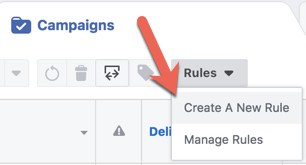
The rules dashboard appears. Under your conditions, choose “Spend”.
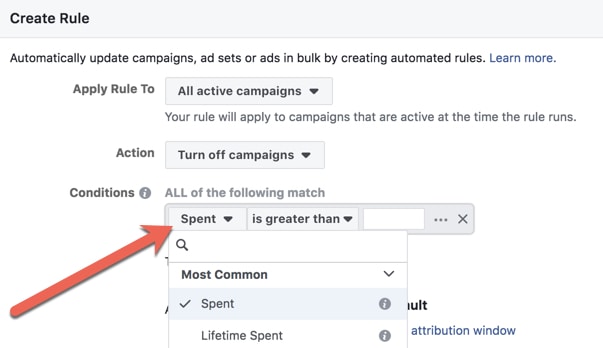
Then, choose your monthly budget as the number. Go to the time range and change it to “Last 30 Days”.
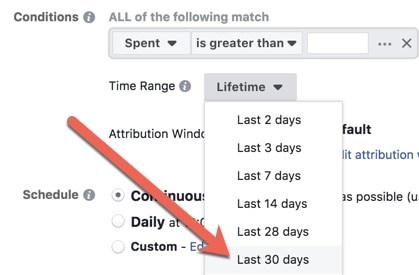
BAM – you’re all set with budgets!
Did something surprise you? Any follow up questions or thoughts? Tell me more in the comments below.
So now that you’ve scared off the “What if I overspend?” demons, let’s get into the nitty-gritty of a great ad.
First, let’s cover one of the most important factors: your audience. Local businesses often just do general location targeting in their zip code, which is a grave mistake.
The details are in the next chapter, which is here.

